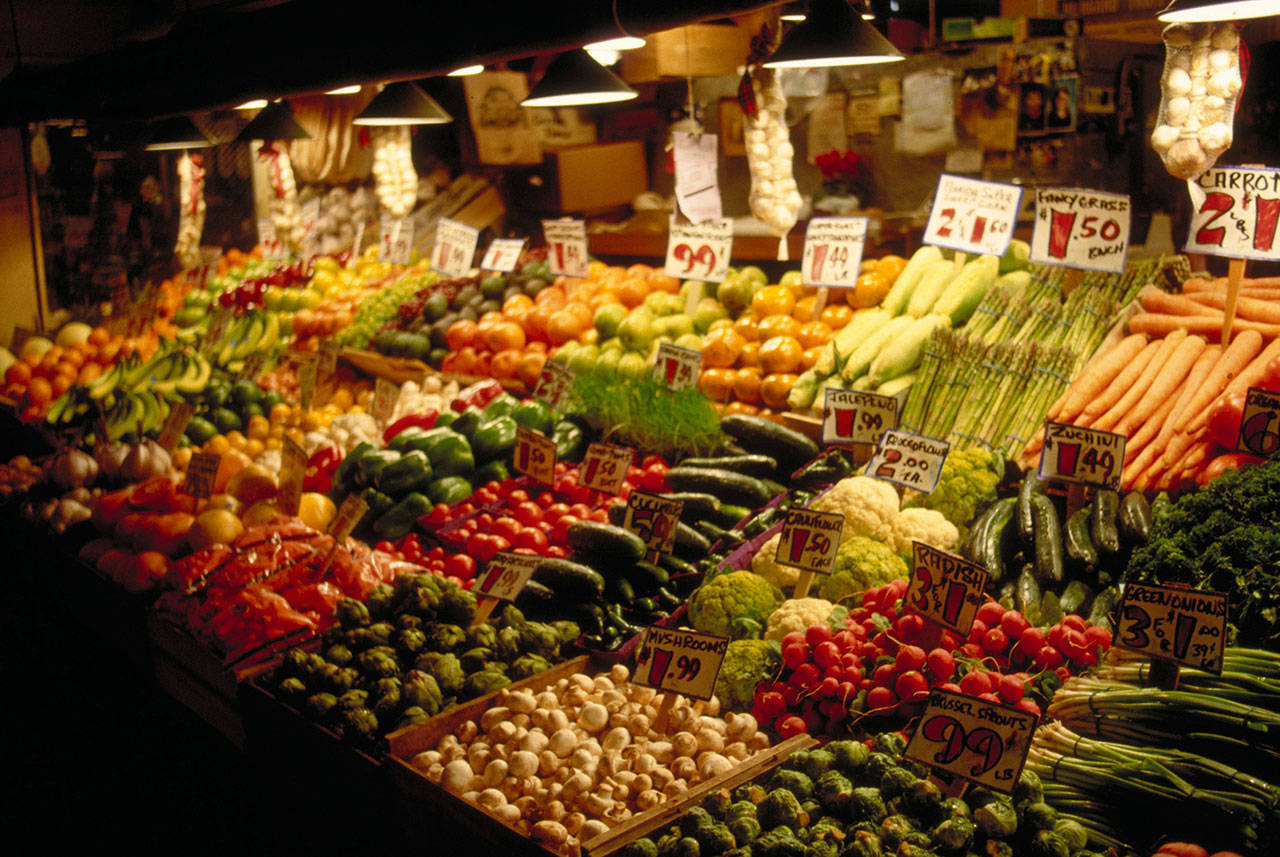By The Herald Editorial Board
A proposal to replace half of the food-stamp benefits that some 46 million Americans rely upon with a box of government commodities represents the latest shot from those who would shift the War on Poverty to a War on the Poor themselves.
The Trump administration recent budget plan includes a proposal to use half of a family’s Supplemental Nutrition Assistance Program benefits, which now are delivered through a debit-like card, with a “Harvest Box” of shelf-stable food to be selected by the government and delivered to SNAP participants.
The Trump administration’s budget director, Mick Mulvaney, attempted to dress up the box by comparing it to Blue Apron’s grocery delivery service, never mind that the contents of a Blue Apron delivery — fresh meats, vegetables and fruits and other ingredients — aren’t what SNAP participants would see when they open their boxes. Instead they’d get canned goods, peanut butter, pasta, cereal and milk.
A comparison to Domino’s would have been just as accurate.
It’s not difficult to pick the proposal apart. The purpose isn’t — as SNAP is intended — to provide low-income Americans with food assistance while encouraging them to shop at neighborhood grocery stores, helping to support the local economy, but rather as a way to shave some $21 billion a year from the federal budget over the next decade, according to a recent New York Times report.
It’s hard to see how that savings would be achieved without making deep cuts to the benefits now delivered to low-income seniors, children and families, especially when having to fund a system to collect, warehouse and distribute the food. Those logistics aside, what happens when families aren’t home to accept their deliveries? Where would the homeless receive their “Harvest Box”?How would packages be protected from theft and damage from weather? And how would the program be responsive to dietary restrictions, such as allergies, and personal and cultural preferences?
The proposal isn’t likely to gain much interest from Congress, nor was support from Congress really the idea. Like other of the administration’s lead-lined trial balloons, the purpose of the “Harvest Box” program was to distract from a companion budget proposal to cut about 30 percent from SNAP while also imposing new work requirements on recipients.
Neither cuts nor additional work requirements are necessary for a program that is among the federal government’s more successful in terms of delivering on what is expected of it, as detailed in a series of papers by the Center for Budget and Policy Priorities, a nonpartisan research and policy institute.
Among the findings:
SNAP provides benefits to those most in need. About 83 percent are at or below the federal poverty line. Two-thirds of recipients are children, elderly or disabled. And it delivers the aid efficiently, with 93 percent of its spending on direct food assistance.
Without additional work requirements, already about 58 percent of adult, non-disabled recipients are working, while 82 percent work in the year before or after receiving SNAP.
Only 3 percent of SNAP benefits represent over-payments, either benefits that went to ineligible households or were above allowed support. In those cases, relatively few payment errors were because of fraud or cheating but honest mistakes by recipients or program employees. At the same time, the Agriculture Department has disqualified thousands of retail stores that were fraudulently abusing benefit rules for their own gain.
While the program’s participation levels and spending increased — as intended — during the recession, SNAP’s levels are continuing a decline that began in 2013.
Rather than cutting nearly a third of its budget, and thus a significant share of direct assistance to seniors, children and families, there are modest budget increases that would improve access to food security and more nutritious food.
A recent article on the Brookings Institute website details two such ideas, both pilot programs that have shown promise.
Giving families a modest $30 a month increase in benefits has shown to increase participants’ consumption of vegetables and healthy proteins, while reducing consumption of fast food.
Recipients’ purchase of fruits and vegetables, especially fresh produce, could be further encouraged by offering an incentive of a 30-cent rebate for every dollar up to a $60 cap, spent on fruits and vegetables, fresh, frozen, canned or dried that are packaged without additional sugar, salt, fat or oil.
Millions of America’s low-income families have benefited from SNAP and have used it to help lift themselves out of poverty, outcomes that couldn’t be matched by a box of government commodities and would be jeopardized by the proposed cuts that are hiding in that box.
Talk to us
> Give us your news tips.
> Send us a letter to the editor.
> More Herald contact information.

























